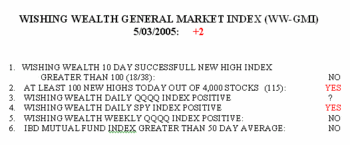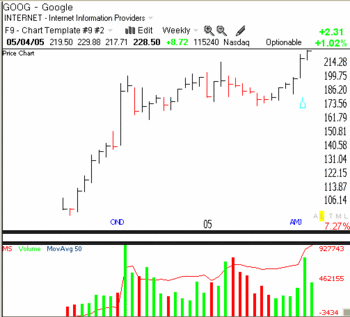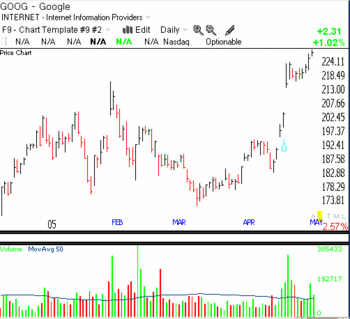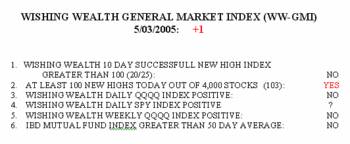“The right way to do it is to pyramid. I have a buying power of 1,000 shares. I think Studebaker is going up. I buy 100 shares. It doesn’t go up when it should, or worse, goes down. I sell it out. The loss can be charged to insurance, or experience, or as necessary cost of getting started right. Next, I buy 100 Chrysler. It begins to advance as I anticipated. So I buy 200 more. It still does well, so I buy another lot. And so on. First thing you know, if it’s good I am long a big line of the right stock with a small initial risk. I lost only 100 shares in Studebaker; I risked only 100 in Chrysler. To a degree, the risk in the stock I bought on the way up was mainly the risk of my paper profits; it was not like entirely risking capital as in the initial purchase.” Gerald Loeb, The Battle for Investment Survival, 1965, p. 81.
Note the perceptive title of Loeb’s book–battle for survival. All of the great stock traders speak of pyramiding their purchases. Don’t plunge into a stock and risk a lot of money. The idea is to make a small pilot buy, test the waters, and then add more shares as the stock moves as you predicted. I am not talking about day trading. I am talking about rockets that will rise for maybe a year or so. This is how to make big money–it is in the big swing, not the minute daily gyrations in price. I don’t have the time or interest to be glued to the stock monitor every day. I would rather select stocks that I think will rise for a while, place my stops, and let them rise or be sold out with a small loss. I will return to this theme later in this post.
For the past week, I have noticed something strange happening in the short term interest rate index.  The steady rising trend seemed to be stalling. And then the last 2 days it has been in a steep decline. Could it be that the Fed is startled bythe news suggesting a slowing economy, and by today’s announcements of downgrades in GM and FORD’s credit status? It was really interesting to see that the market bounced back from a big decline today. And the charts of FNM and the housing stocks actually held up well today. A lot of the big caps also seem to be forming bases or are in uptrends–INTC, MSFT, KO, MO,PFE, C, MRK, JPM, AXP,PG, to name a few. (I am intrigued by IVGN–check it out.)
The steady rising trend seemed to be stalling. And then the last 2 days it has been in a steep decline. Could it be that the Fed is startled bythe news suggesting a slowing economy, and by today’s announcements of downgrades in GM and FORD’s credit status? It was really interesting to see that the market bounced back from a big decline today. And the charts of FNM and the housing stocks actually held up well today. A lot of the big caps also seem to be forming bases or are in uptrends–INTC, MSFT, KO, MO,PFE, C, MRK, JPM, AXP,PG, to name a few. (I am intrigued by IVGN–check it out.)
Perhaps most telling was the action of the WW-GMI today. It moved to +2 with a positive reading from the Daily SPY index. And the Daily QQQQ Index is very close to turning positive. I do not receive IBD until tomorrow, so I do not know if their mutual fund index has moved above its 50 day average yet. You may have seen it by the time you read this. There were also 115 new highs today and only 44 new lows in my universe of 4,000 stocks.
It moved to +2 with a positive reading from the Daily SPY index. And the Daily QQQQ Index is very close to turning positive. I do not receive IBD until tomorrow, so I do not know if their mutual fund index has moved above its 50 day average yet. You may have seen it by the time you read this. There were also 115 new highs today and only 44 new lows in my universe of 4,000 stocks.
So, what should I do with all of these indications? As much as I was comfortable with the bear case, I have to heed them. I sold out my put options and made pilot buys in stocks that looked strong. Remember the discussion of pyramiding above? I always wade slowly into a stock. The bottom line is that interest rates may have stabilized, the Fed is on hold, and the market may be turning. I do not predict the market action. I only try to read what is happening now. Things could reverse tomorrow again. However, I have found that at the beginning of an uptrend no one believes in it, and the indexes often go back and forth for a bit. About 5-10 days after the trend begins it becomes obvious to most people. I guess we will just have to wait and see what develops.—————————————————————-
Some people have sent me questions about trading stocks in their IRA. I found a somewhat dated site about some of the benefits of doing that. This link is somewhat more timely now, given that most of us recently completed our tax returns. Most people do not know they can go short in an IRA by buying put options. IRA accounts do not allow margin transactions, so we cannot actually short stocks. I will write about these issues in a future post. Right now it may be more appropriate to think about ways to go long, rather than short.


